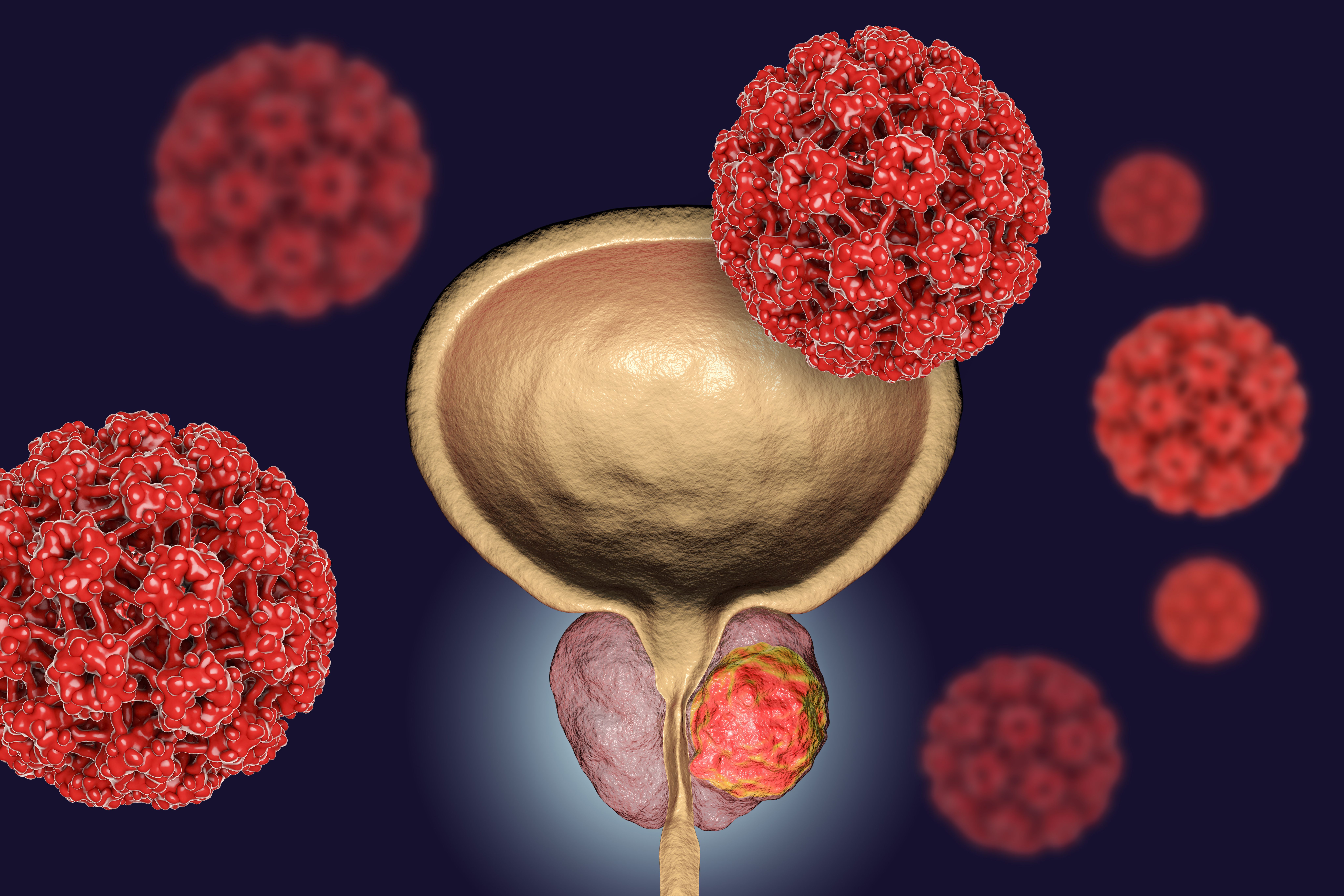Added Darolutamide Does Not Increase Toxicity With ADT/Docetaxel in mHSPC
Darolutamide plus androgen deprivation therapy and docetaxel was not associated with an increase in incidence or severity of adverse events versus androgen deprivation therapy plus docetaxel in patients with metastatic hormone-sensitive prostate cancer.

Darolutamide (Nubeqa) plus androgen deprivation therapy (ADT) and docetaxel was not associated with an increase in incidence or severity of adverse events (AEs) versus ADT plus docetaxel in patients with metastatic hormone-sensitive prostate cancer (mHSPC), according to a safety analysis presented by E. David Crawford, MD, professor of urology at UC San Diego School of Medicine, at the 2022 American Urological Association Annual Meeting.1
In the randomized phase 3 ARASENS trial (NCT02799602), darolutamide plus ADT and docetaxel was found to significantly improve overall survival in patients with mHSPC. In addition, the incidence of any-grade AEs, grade 3-5 AEs, serious AEs, and treatment discontinuation due to AEs were similar in both groups.
The international ARASENS trial randomized 1306 patients with mHSPC 1:1 to receive either 600 mg of darolutamide twice daily plus ADT and 6 cycles of docetaxel starting on day 1 and repeating every 21 days, or a placebo plus ADT and docetaxel. The primary end point was OS from the time of randomization. Secondary end points included time to castration-resistant prostate cancer (CRPC), time to subsequent therapy, time to pain progression, time to first symptomatic skeletal event, and time to worsening of disease-related physical symptoms.
Patients were eligible for the trial if they had mHSPC with an ECOG performance score of 0 or 1, and they were ineligible if they had only regional lymph node involvement, or if they received ADT more than 12 weeks before randomization; previously received second-generation androgen receptor (AR) pathway inhibitors, chemotherapy, or immunotherapy for prostate cancer; or received radiotherapy within 2 weeks of randomization. The median age of the patient population was 67 years and 86.1% had metastatic disease at diagnosis. There were 652 patients randomized to the darolutamide group and 650 in the placebo group.
Safety was evaluated in 1302 of 1306 patients. The most frequently reported AEs were alopecia, neutropenia, and fatigue, which occurred in 40.5%, 39.3%, and 33.1%, respectively, of patients who received darolutamide and in 40.6%, 38.8%, and 32.9% of those receiving placebo. These AEs were most frequently observed in the first 6 months of treatment during the docetaxel treatment period in both groups and occurred in 0% to 5.4% of patients in later months. Other common AEs reported in at least 10% of either patient group included peripheral edema, diarrhea, nausea, increased serum liver enzyme concentrations, and peripheral neuropathy; these were also more frequently found in this period and similar in incidence across groups.
Patients in the darolutamide group had an overall AE incidence rate of 99.5% versus 98.9% in the placebo group. The rate of grade 3 to 5 AEs and the rate of serious AES were 70.2% and 44.8%, respectively, for those receiving darolutamide versus 67.5% and 42.3% for those receiving placebo. AEs that led to treatment discontinuation occurred in 13.5% of those receiving darolutamide versus 10.6% of those receiving placebo.
For AEs associated with AR pathway inhibition, there was generally a 2% difference between darolutamide and placebo groups. Rash and hypertension were higher for those receiving darolutamide (16.6% versus 13.5% and 13.7% versus 9.2%, respectively), but the exposure-adjusted incidence rates were more comparable, at 6.2 for darolutamide versus 7.3 for placebo for rash and 5.1 versus 5.0 for hypertension, respectively.
The results in terms of OS, which were previously reported in the New England Journal of Medicine, significantly favored darolutamide.2 Patients had a 32.5% reduction in risk of death (HR, 0.675; 95% CI, 0.568-0.801; P < .0001) versus those receiving placebo. Median OS was not estimable (NE) for darolutamide versus 48.9 months (95% CI, 44.4-NE) with placebo.
Median time to CRPC was also NE for patients receiving darolutamide versus 19.1 months (95% CI, 16.5-21.8) with placebo (HR, 0.36; 95% CI, 0.30-0.42; P < .001). Median time to pain progression for those receiving darolutamide was not reached (95% CI, 30.5-NE) versus 27.5 months (97% CI, 22.0-36.1) with placebo (HR, 0.79; 95% CI, 0.66-0.95; P = .01).
Based on the relatively similar incidence of AEs in both groups, investigators concluded that darolutamide led to significantly increased survival without increasing toxicity to patients.
References:
1. Crawford ED, Smith MR, Tombal B, et al. LBA01-07: Overall safety and incidences of adverse events by time interval with darolutamide plus androgen-deprivation therapy and docetaxel in the phase 3 ARASENS trial. Presented at: 2022 American Urological Association Annual Meeting; May 13-16, 2022; New Orleans, LA.
2. Smith MR, Hussain M, Saad F, et al; ARASENS Trial Investigators. Darolutamide and survival in metastatic, hormone-sensitive prostate cancer. N Engl J Med. 2022;386(12):1132-1142. doi:10.1056/NEJMoa2119115